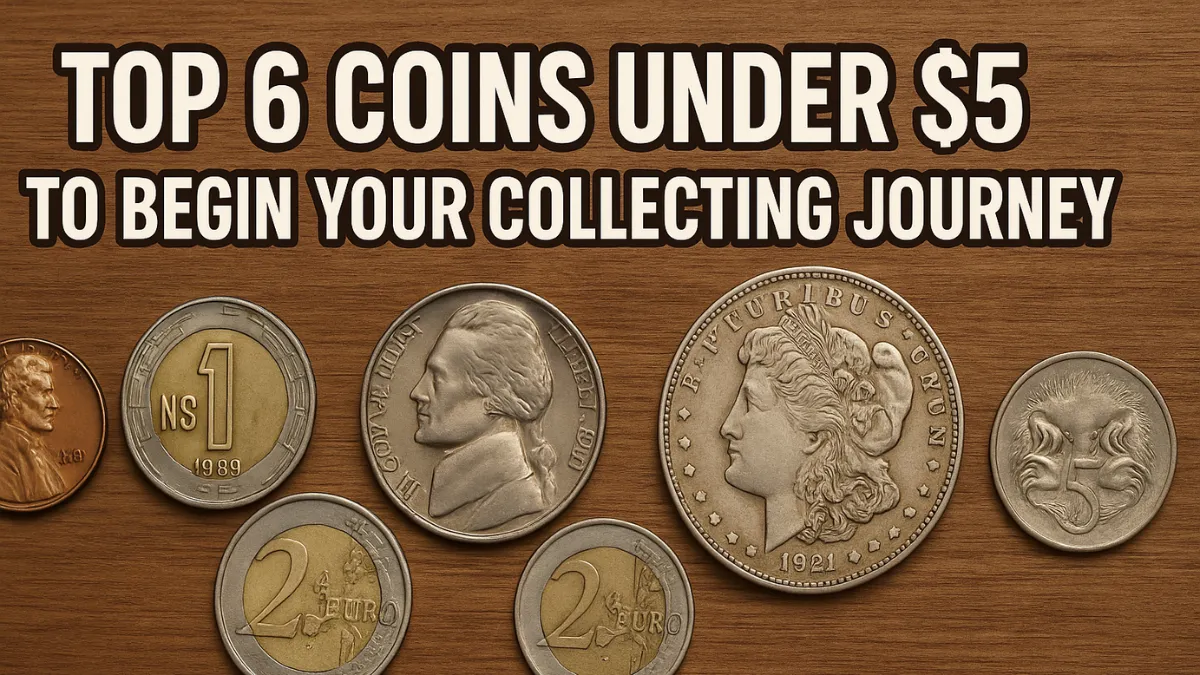Looking for affordable cheap coins for your collection?
More and more collectors are finding ways to enjoy coin collecting without spending a lot of money.
Let’s face it — times are tougher, and many of us are tightening our budgets. With rising costs for essentials like food, fuel, and housing, there’s often not much left over for hobbies.
But hobbies are still important for enjoyment and relaxation. The good news? You don’t need to spend a lot to start or grow a coin collection. In fact, there are many interesting coins you can find for less than $5 each!
6 Types Of Coins You Can Buy For Under $5
You might be surprised at the value you can get in coin collecting with just a few dollars. Here are six types of coins that are both affordable and fun to collect:
#1 – Indian Head Pennies
Minted between 1859 and 1909, Indian Head pennies are classic collectibles. While rare early dates from the 1860s and 1870s can be pricey, many coins from the 1880s through 1909 are available for under $5. Just be selective — avoid coins that are cleaned, scratched, or damaged. With a little patience, you can find a nice low-grade example for a great price.
#2 – Wheat Pennies
Wheat pennies, made from 1909 to 1958, are gradually becoming harder to find in circulation. While some rare dates like the 1909-S V.D.B., 1914-D, and 1931-S can be costly, most others — especially those minted after 1930 — are commonly found for 10 cents to $2 each. Even the well-known 1943 steel pennies can be bought for less than a dollar in circulated condition.
#3 – Buffalo Nickels
Buffalo nickels were issued from 1913 to 1938 and continue to be a favorite among collectors. While early or rare dates can be expensive, many common coins from the 1920s and 1930s (especially mid-1930s) are available for under $5 in worn condition.
#4 – Mercury Dimes
The Mercury dime, produced from 1916 to 1945, is a silver coin featuring Liberty in a winged cap. Although some rare dates can be costly, many dimes from the 1930s and 1940s are easy to find for $5 or less in lower grades. It’s a great way to collect vintage silver on a budget.
#5 – Bicentennial Coins
In 1976, the U.S. Mint released special quarter, half-dollar, and dollar coins to mark the nation’s 200th birthday. Though a full set may cost $7 to $10, individual copper-nickel versions of these Bicentennial coins can often be found for just $2 to $3 each. Fun fact: these coins are dated “1776–1976” — you won’t find any with a 1975 date!
#6 – Kennedy Half Dollars
Kennedy half dollars are still minted today, but they rarely show up in everyday circulation. First released in 1964, these coins originally contained silver — 90% in 1964 and 40% from 1965 to 1970. Since 1971, they’ve been made with copper-nickel clad. Most regular-issue Kennedy halves, even in uncirculated condition, can be picked up for less than $5.
The Bottom Line
Coin collecting doesn’t have to cost a lot. With just a few dollars, you can start building a collection of interesting, historical coins.
Happy collecting! And if you ever need help choosing budget-friendly coins, feel free to reach out and ask.
FAQ
Q: Where can I find coins for under $5?
You can find budget-friendly coins at local coin dealers, online marketplaces like eBay, and through auctions. Coin shops and shows are also great places to browse for inexpensive coins.
Q: How do I know if a coin is worth buying?
Always inspect the coin for condition, including any cleaning, damage, or wear. Coins in better condition tend to hold more value, but lower-grade examples can still be great for building a collection on a budget.
Q: Are there any rare coins I can find for under $5?
While most rare coins will be more expensive, you can still find low-grade examples of rare coins (like certain dates of Indian Head pennies or Buffalo nickels) for under $5. Be patient and shop around for the best deals.
Q: How can I tell the difference between cleaned and uncleaned coins?
Cleaned coins often have shiny, unnatural surfaces or signs of scrubbing. Uncleaned coins retain their original patina, with no artificial shine or abrasions. When buying, always ask the seller about the coin’s condition to avoid cleaned specimens.
